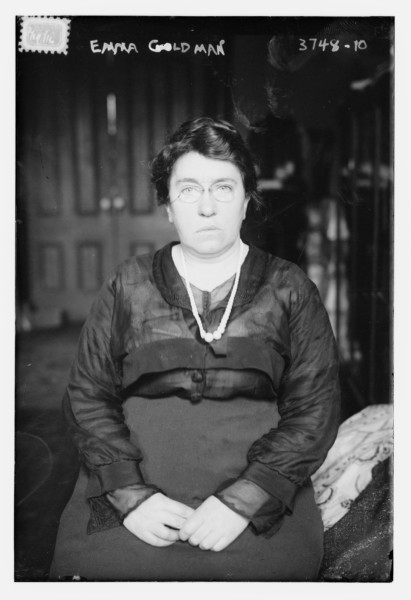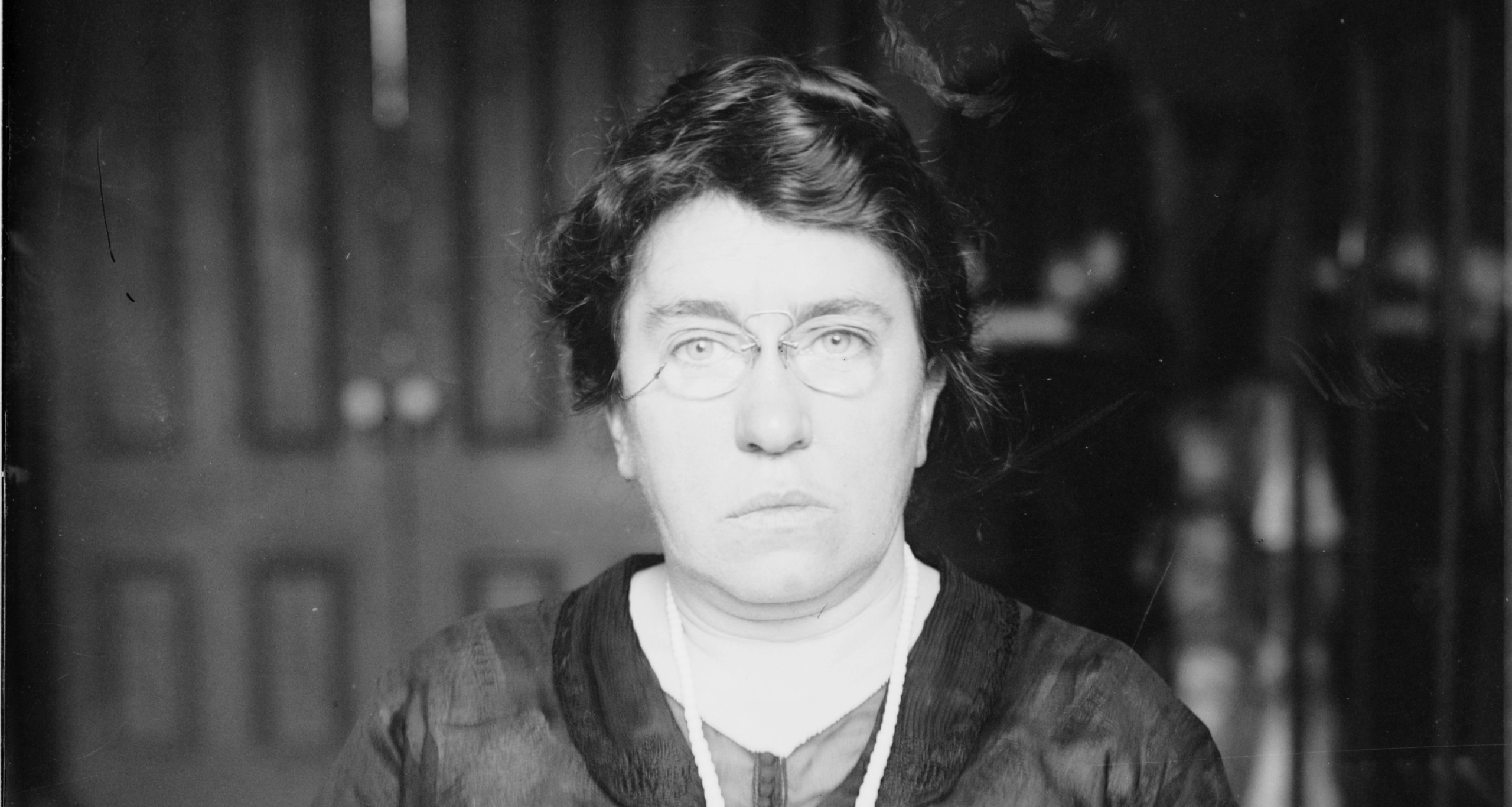Sign up for The Media Today, CJR’s daily newsletter.
One hundred years ago this month, Emma Goldman was sitting in a prison in Missouri after being convicted of impeding the military draft. Goldman’s conviction largely silenced her incendiary publication, Mother Earth, as well as her fiery No-Conscription League speeches, in which she had mercilessly attacked the draft as anti-democratic as the US government sought to garner popular support for its entry into World War I. Just before Christmas 1919, after completing her two-year sentence, Goldman was taken to Ellis Island, where she was placed on a ship with other dissidents and then sent away.
US newspapers, which had mocked “Red Emma” for her ideas and degraded her speeches, carried gleeful reports of Goldman’s deportation. The Colorado Springs Gazette reported her deportation had come “not a whit too soon.” America, it seemed, was finished with Goldman.
A century of hindsight should tell us otherwise. Goldman, long known as an anarchist and feminist, deserves credit for her work as a free-press trailblazer, whose legal ordeals—a 1917 trial for impeding the draft, a 1918 Supreme Court decision to uphold her conviction, and her efforts to avoid deportation in 1919—were forerunners for critical First Amendment precedents. Goldman’s appeal to the court marks the final time justices encountered a clear First Amendment question and ignored it, instead deciding the case on different legal grounds.
Related: Can the First Amendment save us?
On the day law enforcement arrested Goldman in her Mother Earth offices in New York, President Woodrow Wilson signed the Espionage Act into law. The act, an attempt to safeguard the war effort, created a national standard for limitations on free press and speech; federal officials used it to halt the delivery of countless newspapers, magazines, and other printed materials. When justices defined the scope of the First Amendment for the first time—in Schenck v. United States in 1919, a case that upheld the convictions of two socialists arrested for mailing anti-draft pamphlets—they cited Goldman v. United States.

Emma Goldman, in a photograph taken circa 1915. Library of Congress, Prints & Photographs Division, LC-B2-3748-10The Court acknowledged in Schenck that it had not referred to the First Amendment in Goldman, indicating that the free expression implications of Goldman’s case were not lost on the justices. After recognizing the absence of First Amendment guidance in Goldman, Justice Oliver Wendell Holmes explained that the Court would devote a “few words” to it in Schenck. Thus, as Goldman was serving the final six months of her two-year term, the Court included her case in its justification for squarely addressing the First Amendment for the first time.
Schenk was one of three Espionage Act–related cases decided by the Court in the spring of 1919. In each, justices upheld the Espionage Act. By the fall, however, things had begun to change. In Abrams v. United States, the Court upheld the conviction of anarchist Jacob Abrams, who with others had printed thousands of leaflets that criticized President Wilson and the government’s relationship with Russia. Holmes dissented; according to Holmes, the arguments on the leaflets contributed to the marketplace of ideas, which was “the theory of our Constitution.”
How else is the world to take America seriously, when democracy at home is daily being outraged, free speech suppressed, peaceable assemblies broken up by overbearing and brutal gangsters in uniform?
The courts had been less welcoming to First Amendment ideas just two years earlier, during Goldman’s federal trial. A judge told the jury that Goldman’s charges were not a First Amendment issue. He explained the trial was not “a question of free speech… No American worthy of the name believes in anything else than free speech, but free speech means not license, not counseling disobedience of the law.”
Goldman believed differently. She argued her case was about free press and free speech, since it was her publication and her speeches that had been halted. “How else is the world to take America seriously, when democracy at home is daily being outraged, free speech suppressed, peaceable assemblies broken up by overbearing and brutal gangsters in uniform?” Goldman asked jurors. “When free press is curtailed and every independent opinion gagged?”
Goldman was well-known to Americans by her 1917 trial; she had been arrested as a conspirator in the 1901 assassination of President William McKinley and ultimately released. Newspapers around the country steadily covered her 1917 trial, though coverage often ignored Goldman’s arguments in favor of spectacle. During jury selection, the judge ordered Goldman’s partner Alexander Berkman, also on trial, to stop asking potential jurors off-topic questions. When Goldman asked to respond, the judge ordered her to sit down and not speak. That exchange led the Associated Press’s report; other newspapers ran headlines such as “Emma Goldman Obeys,” and “Tells Emma to Sit Down, and She Does.”
Both Goldman and the judge made statements about free expression on the final day of the trial, but only the judge’s comments appeared in wire reports. Jurors found Goldman guilty. Six months later, she was out of prison and fighting the government’s deportation effort when the Court heard Abrams’s appeal. Goldman’s lawyer, Harry Weinberger, also represented Abrams. In October 1919, he split his time between arguing for Abrams before the Court and fighting Goldman’s deportation. He lost both battles.
If Goldman was not entirely successful in making the courtroom a forum for her ideas, her trial still raised a national discussion about freedom of expression. Newspapers ran dozens of editorials and letters to the editor that focused on these topics—if not on Goldman’s argument—during her trial. A Dallas Morning News editorial argued for Goldman’s imprisonment; she was a nuisance before the war, the editorial contended, but the country “can not well afford to be distracted and annoyed by them” now. A letter in the Salt Lake Telegram recognized the value of free speech, but argued it should be limited during wartime. Similarly, an editorial in the Belleville Democrat contended Goldman could not claim a right to free speech because speaking against “the government in wartime is treason.” Many of the pieces mirrored Holmes’s reasoning in Schenck, which found that the press and speakers could be limited.
The Court, and Holmes himself, did not hold to that interpretation for long. Two weeks before Goldman’s deportation, Holmes changed course by dissenting in Abrams. Twelve years later, Holmes was part of a 5-4 majority that struck down a Minnesota law that allowed the government to restrain “nuisance” newspapers from publication. The case marked the first time the Court overturned a law based on its interpretation of the speech and press clauses.
By then, Goldman was living in France, finishing her biography, Living My Life, in which she documented her fight for the freedom to publish and to speak while in the U.S. She died in 1940 and was buried near Chicago, near the graves of anarchists who died in the Haymarket Riot of 1886.
For nearly a century, legal scholars have marked the Supreme Court’s decision in Schenck as the starting point for First Amendment precedent—the beginnings of the First Amendment as we have come to know it. Abrams, later that year, provided us our first theory of the First Amendment. But until we credit Goldman with blazing a trail for the first precedent-setting decisions and encouraging a national discussion, via newspapers, about the meaning of free expression, our understanding of this crucial period in American history is incomplete.
ICYMI: The battle for the soul of the First Amendment
Has America ever needed a media defender more than now? Help us by joining CJR today.



